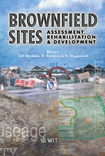Economic Aspects Of Polluted Soil Bioremediation
Price
Free (open access)
Transaction
Volume
55
Pages
Published
2002
Size
654 kb
Paper DOI
10.2495/BF020261
Copyright
WIT Press
Author(s)
J. Troquet & M. Troquet
Abstract
Industrialisation in developed country has left many type of pollution during the last 150 years. The end of pollutants course is generally soil and groundwater. In the main part of west countries, authorities must list the contaminated sites and have to consider their clean-up. In the same time, the use of biotechnology for the removal of organic pollution from soil and groundwater is in progress and offer new possibilities of cost savings. The main characteristics of bioremediation processes are their capacity to be implemented in-situ, that is to say to avoid great civil engineering works. Nevertheless before to choose this innovative technology, it is necessary to define the best treatment strategy, which is in close relation with local conditions. In this paper we will investigate some specific cases for which it is possible to implement an effective bioremediation process. In addition, the main process variables will be identified in order to keep the competitive price of this biotechnological approach. In this way, it will be emphasised particularly about the whole knowledge of the quality and quantity of the pollutants to be treated and both physical and biological factors active on the bioprocess in the first stage. Secondly, pilot lab experiment will be conducted to identify the different parameters of oxidizer and nutriments supplementation and micro-organisms growth kinetics. This strategy appears surprising, because the real evaluation of bioremediation cost cannot be established without the two steps described above, and this first operation could represent 5 to 15 % of the global cost of rehabilitation.
Keywords




